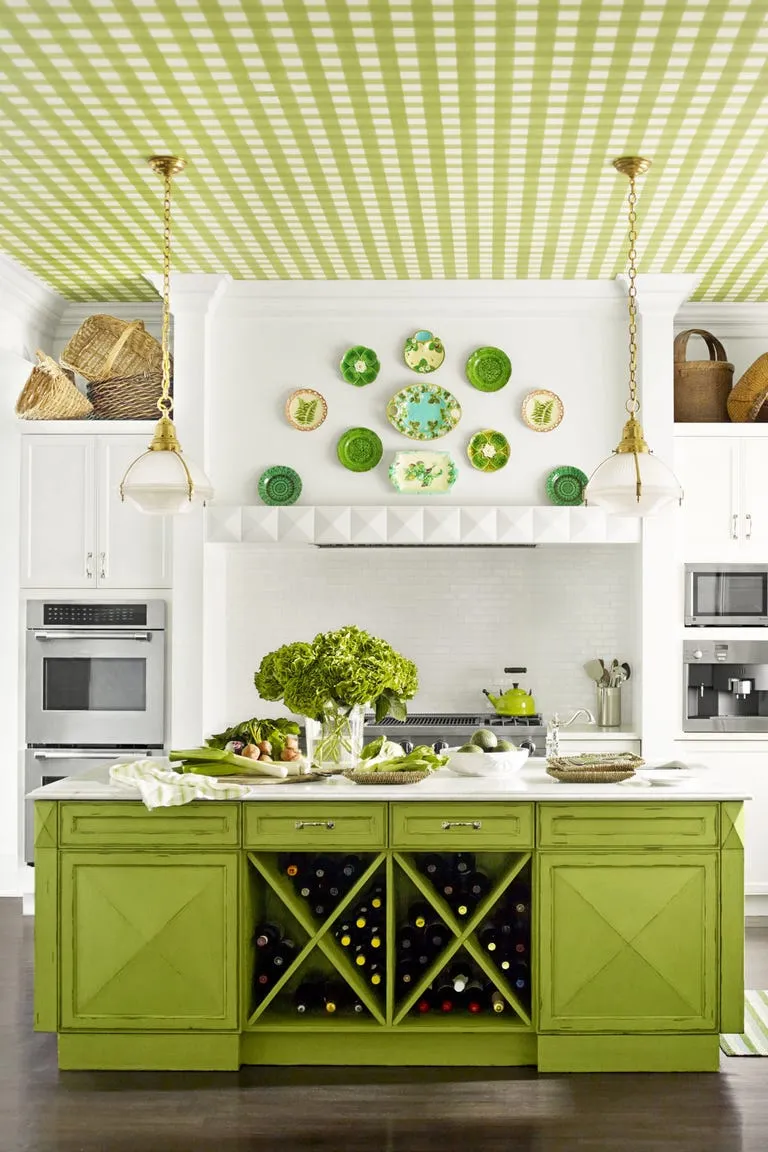Embracing DIY Kitchen Decor Trends
The kitchen, often called the heart of the home, is constantly evolving in terms of design and functionality. DIY kitchen decor trends provide a fantastic opportunity to personalize your space, reflect your style, and stay within budget. With a little creativity and effort, you can transform your kitchen into a stylish and inviting area that perfectly suits your needs. This article explores six exciting DIY kitchen decor trends that are gaining popularity, offering ideas and inspiration to help you create the kitchen of your dreams. From open shelving to bold colors and smart storage solutions, discover how you can refresh your kitchen with simple and impactful DIY projects. Get ready to unleash your inner designer and breathe new life into your culinary space, making it not just a place to cook, but a place to enjoy.
Open Shelving and Floating Shelves
Open shelving has become a staple in modern kitchen design, offering both aesthetic appeal and practical storage solutions. Instead of traditional upper cabinets, open shelves create an airy, spacious feel while showcasing your favorite dishware, cookbooks, and decorative items. This trend encourages a curated look, allowing you to display items that reflect your personality and design preferences. Floating shelves, in particular, add a sleek and minimalist touch to any kitchen. They appear to float on the wall, creating a clean and uncluttered appearance, which enhances the visual space. Whether you’re aiming for a rustic, farmhouse vibe or a contemporary, minimalist aesthetic, open shelving provides a versatile and stylish storage solution.
Benefits of Open Shelving
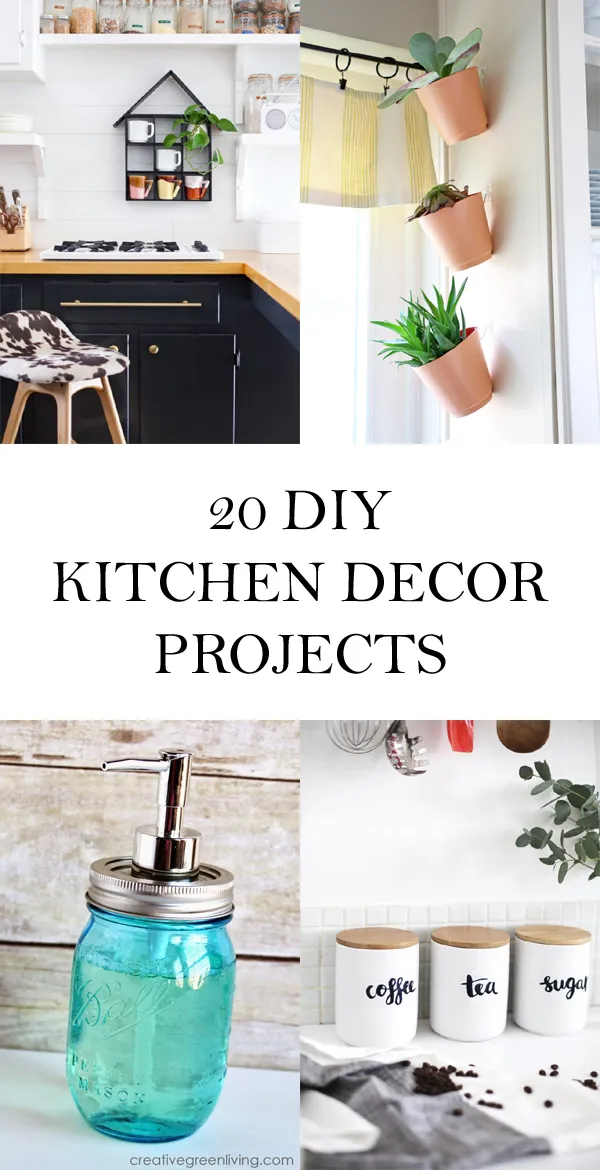
Open shelving offers several advantages beyond aesthetics. Firstly, it makes it easier to access frequently used items. Dishes, glasses, and spices are readily available, streamlining your cooking and serving processes. Secondly, open shelving encourages you to keep your kitchen organized. Since everything is visible, you’re more likely to maintain a tidy and well-organized space. Finally, it creates a sense of openness, making small kitchens feel larger and more inviting. The lack of bulky cabinets allows natural light to flow freely, brightening up the entire kitchen. Open shelving is a great way to showcase your style, and also encourages you to become more organized and keeps the space looking tidy, creating a more enjoyable cooking experience.
How to Install Floating Shelves
Installing floating shelves can be a straightforward DIY project. Begin by measuring and marking the desired location on your wall. Use a stud finder to locate wall studs, as these will provide the necessary support for the shelves. If you’re unable to find studs, use heavy-duty anchors designed for the weight of the shelves and their contents. Drill pilot holes, then attach the brackets to the wall, ensuring they are level. Once the brackets are securely mounted, slide the shelves onto the brackets and secure them with screws. Consider the weight capacity of both the shelves and the brackets. Make sure to follow the manufacturer’s instructions for installation. Ensure your shelves are level and sturdy before placing items on them. A well-installed floating shelf adds both functionality and modern design to your kitchen.
Incorporating Natural Elements
Bringing the outdoors inside is a prominent DIY kitchen decor trend, focusing on natural materials, textures, and elements that evoke a sense of calm and connection to nature. This trend encompasses everything from wooden accents and stone countertops to indoor herb gardens. The goal is to create a warm, inviting, and organic feel within the kitchen, making it a comfortable space for cooking, dining, and socializing. Natural elements add visual interest and texture, while also promoting a healthier living environment. By incorporating these elements, you can design a kitchen that is both beautiful and sustainable.
Wooden Accents for a Warm Feel
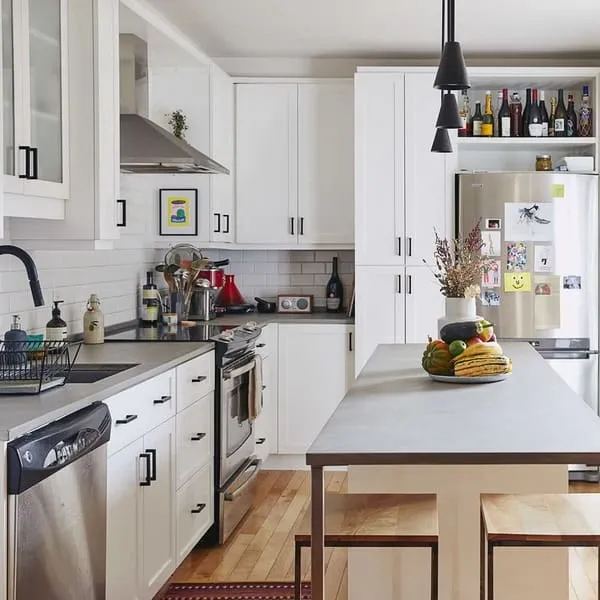
Wood is a versatile and timeless material that adds warmth and character to any kitchen. Consider incorporating wooden accents through open shelving, butcher block countertops, or even wooden cutting boards displayed on the counter. The type of wood you choose can significantly impact the overall aesthetic. Lighter woods like maple and birch create a bright, airy feel, while darker woods like walnut and cherry add a touch of sophistication. Wooden elements provide a textural contrast against smoother surfaces like stainless steel and tile, adding depth and visual interest. DIY projects like building a wooden spice rack or adding wooden trim to existing cabinets are simple ways to introduce wooden accents and enhance the overall warmth of your kitchen.
Indoor Herb Gardens
An indoor herb garden is a practical and stylish addition to any kitchen. Not only does it provide fresh herbs for cooking, but it also adds a touch of greenery and vibrancy to the space. You can create a simple herb garden on a windowsill, using individual pots or a larger planter. Herbs like basil, mint, rosemary, and thyme thrive in sunny locations. Consider using attractive pots that complement your kitchen decor. Alternatively, you can build a vertical herb garden to maximize space. With a little bit of care, your herb garden can not only enhance your culinary creations but also bring a sense of natural beauty into your kitchen, making it a more pleasant and inviting place to spend time.
Textured Backsplashes
Backsplashes have evolved beyond a functional necessity, becoming a key design element that can transform the look and feel of your kitchen. Textured backsplashes add visual interest and depth, creating a focal point that elevates the overall aesthetic. Whether you opt for subway tiles, mosaic tiles, or natural stone, the choice of texture and pattern can significantly impact the character of your kitchen. DIY projects like installing a textured backsplash are a great way to add personality and style without undertaking a major renovation.
Types of Textured Backsplashes
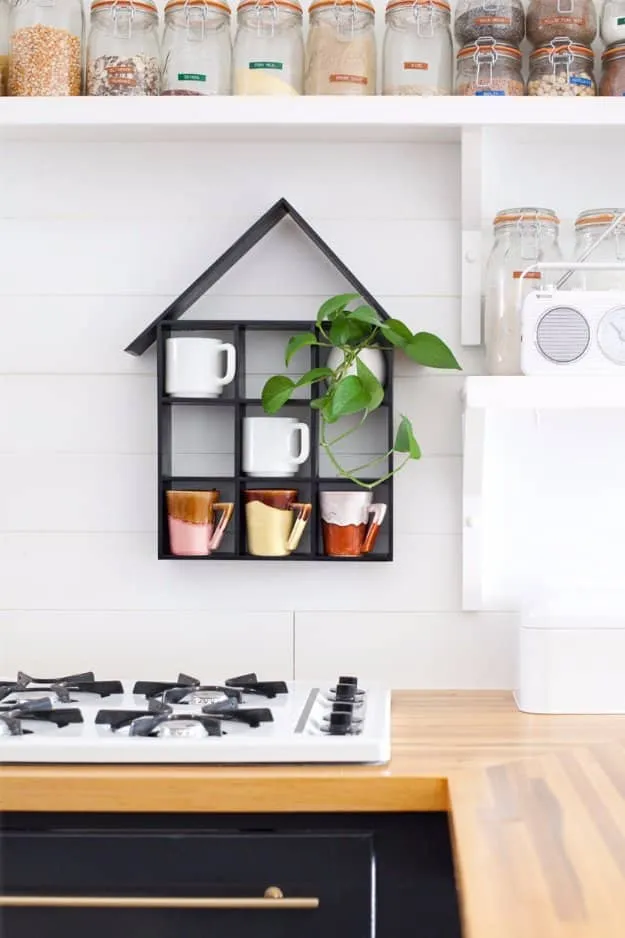
The options for textured backsplashes are vast. Subway tiles, arranged in various patterns like herringbone or vertical stack, offer a classic and versatile look. Mosaic tiles, available in glass, stone, or ceramic, add intricate detail and visual interest. Natural stone backsplashes, such as slate or travertine, bring a touch of rustic elegance to the kitchen. Other options include textured wallpapers and faux brick panels for a more budget-friendly approach. Consider the overall style of your kitchen when choosing a texture. The goal is to find a texture that complements your cabinets, countertops, and existing design elements, creating a cohesive and visually appealing space.
DIY Backsplash Installation
Installing a backsplash is a rewarding DIY project that can significantly enhance your kitchen. Begin by measuring the area and preparing the surface, ensuring it’s clean and level. Apply thin-set mortar to the wall, using a notched trowel to create ridges. Carefully place the tiles onto the mortar, using spacers to maintain consistent grout lines. Once the mortar has dried, apply grout, using a grout float to press it into the spaces between the tiles. After the grout has set, wipe away the excess with a damp sponge and seal the grout to protect it from stains and moisture. With careful planning and execution, you can install a beautiful and functional backsplash that transforms your kitchen.
Bold Color Palettes
Gone are the days of all-white kitchens. Bold color palettes are making a splash in the world of DIY kitchen decor, allowing homeowners to express their personality and create a vibrant, dynamic space. From deep blues and greens to cheerful yellows and oranges, incorporating bold colors into your kitchen can instantly elevate its aesthetic. This trend is all about embracing individuality and making a statement. This can be achieved through painted cabinets, accent walls, or even colorful appliances. Remember to consider the overall style of your home and the mood you want to create when selecting your color palette.
Popular Color Combinations
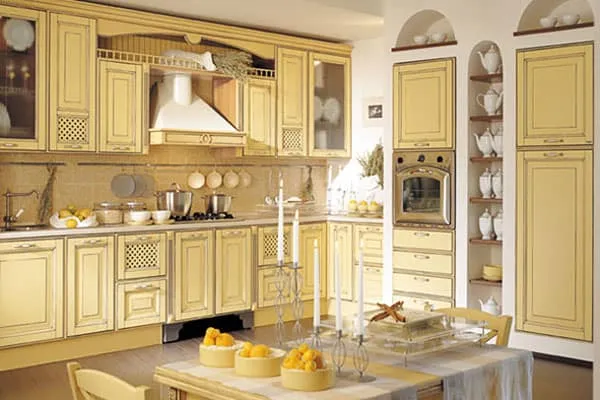
Popular color combinations for kitchens include navy and white, emerald green and gold, and charcoal gray and yellow. Navy and white create a classic, timeless look, while emerald green and gold add a touch of luxury and sophistication. Charcoal gray and yellow offer a modern, stylish contrast. When choosing colors, consider the amount of natural light in your kitchen and the size of the space. Lighter colors can make a small kitchen feel larger, while darker colors can create a cozy, intimate atmosphere. Don’t be afraid to experiment with different color combinations and find the ones that best suit your style and the overall design of your home.
Painting Kitchen Cabinets
Painting kitchen cabinets is a budget-friendly way to transform your kitchen and incorporate a bold color palette. Before painting, clean and sand your cabinets to ensure the paint adheres properly. Remove the cabinet doors and hardware, then prime the cabinets to create a smooth base. Apply two coats of paint, allowing each coat to dry completely. Choose a durable paint specifically designed for cabinets to ensure longevity. Consider adding new hardware to complement the new color and enhance the overall aesthetic. This DIY project can dramatically update the look of your kitchen, allowing you to express your style and create a fresh, inviting space.
Smart Storage Solutions
In today’s busy world, efficient storage is essential in the kitchen. Smart storage solutions maximize space, keep the kitchen organized, and streamline your cooking process. DIY projects focused on storage, like installing pull-out shelves, creating custom drawer dividers, and utilizing vertical space, are gaining popularity. The goal is to make the most of every inch of your kitchen, ensuring that everything has its place and is easily accessible. From simple organizers to more complex projects, smart storage solutions improve functionality and create a more enjoyable kitchen environment.
Maximizing Counter Space
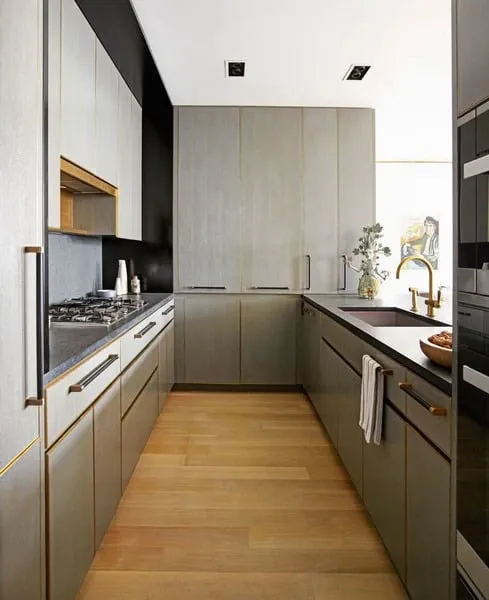
Counter space is precious, so maximizing it is key to a functional kitchen. DIY projects to consider include adding a pull-out cutting board, installing a spice rack on the inside of a cabinet door, or creating a corner storage solution. Utilize vertical space by installing shelves above the countertops for frequently used items or decorative elements. Regularly decluttering your countertops and storing small appliances when not in use can also free up valuable space. Investing in smart storage solutions and being mindful of your daily routines are the easiest ways to maximize counter space.
Organizing Kitchen Drawers
Organized kitchen drawers can significantly improve your cooking experience. Custom drawer dividers, adjustable compartments, and utensil organizers help to keep your tools and supplies neatly arranged. DIY projects like building custom dividers from wood or using adjustable drawer organizers from the store make it easy to create a functional and visually appealing storage system. Consider the items you store in each drawer and design your storage solutions accordingly. Well-organized drawers not only save time but also prevent clutter and make it easier to find what you need when you need it. This creates a more enjoyable and efficient kitchen environment.
Vintage and Retro Accents
Vintage and retro accents are making a comeback in kitchen design, adding a touch of nostalgia and personality to modern spaces. This trend incorporates elements from past decades, such as vintage appliances, retro dishware, and antique kitchenware. The goal is to create a kitchen that feels both stylish and unique, reflecting a love for the past. Whether it’s a mid-century modern aesthetic or a farmhouse-inspired look, vintage and retro accents provide a distinctive charm. By incorporating these elements, you can add character and create a kitchen that tells a story.
Sourcing Vintage Kitchenware
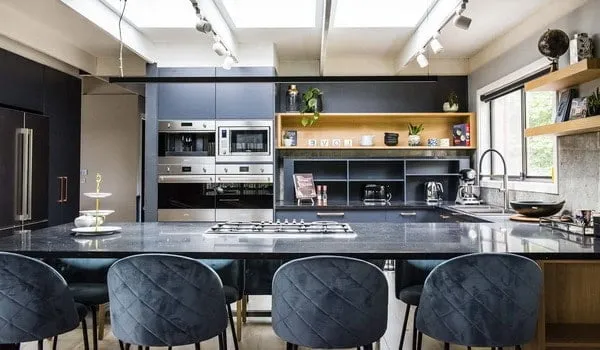
Finding vintage kitchenware can be an exciting treasure hunt. Garage sales, flea markets, antique shops, and online marketplaces are excellent sources for unique and affordable items. Look for items like vintage teacups, colorful mixing bowls, enamelware cookware, and retro-style appliances. Consider the overall aesthetic of your kitchen when selecting vintage items. Vintage dishware and accessories add a touch of charm and character to your kitchen. Also be sure that the pieces fit with your existing aesthetic. Mixing vintage finds with contemporary elements creates an eclectic and personalized space.
Upcycling Old Items
Upcycling is a fantastic way to give old items a new life and incorporate vintage accents into your kitchen. Turn old wooden crates into open shelving, repurpose vintage jars into storage containers, or transform an antique dresser into a kitchen island. Look for ways to reuse and repurpose items. This not only adds character to your kitchen but also promotes sustainability. Upcycling reduces waste and allows you to create unique, one-of-a-kind pieces that reflect your personal style. It’s a creative way to add charm, history, and personality to your kitchen while being environmentally conscious.
In conclusion, the DIY kitchen decor trends of today offer an exciting array of opportunities to personalize your kitchen, elevate its functionality, and create a space that reflects your unique style. From the airy elegance of open shelving to the warmth of natural elements, the vibrancy of bold color palettes, and the practicality of smart storage solutions, there’s something for every homeowner to enjoy. Embrace these trends and let your creativity shine. With a little effort and a dash of DIY spirit, you can transform your kitchen into a stylish and inviting space that you’ll love for years to come. Happy decorating!
